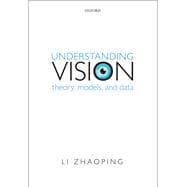While the field of vision science has grown significantly in the past three decades, there have been few comprehensive books that showed readers how to adopt a computional approach to understanding visual perception, along with the underlying mechanisms in the brain.
Understanding Vision explains the computational principles and models of biological visual processing, and in particular, of primate vision. The book is written in such a way that vision scientists, unfamiliar with mathematical details, should be able to conceptually follow the theoretical principles and their relationship with physiological, anatomical, and psychological observations, without going through the more mathematical pages. For those with a physical science background, especially those from machine vision, this book serves as an analytical introduction to biological vision. It can be used as a textbook or a reference book in a vision course, or a computational neuroscience course for graduate students or advanced undergraduate students. It is also suitable for self-learning by motivated readers.
In addition, for those with a focused interest in just one of the topics in the book, it is feasible to read just the chapter on this topic without having read or fully comprehended the other chapters. In particular, Chapter 2 presents a brief overview of experimental observations on biological vision; Chapter 3 is on encoding of visual inputs, Chapter 5 is on visual attentional selection driven by sensory inputs, and Chapter 6 is on visual perception or decoding.
Including many examples that clearly illustrate the application of computational principles to experimental observations, Understanding Vision is valuable for students and researchers in computational neuroscience, vision science, machine and computer vision, as well as physicists interested in visual processes.








